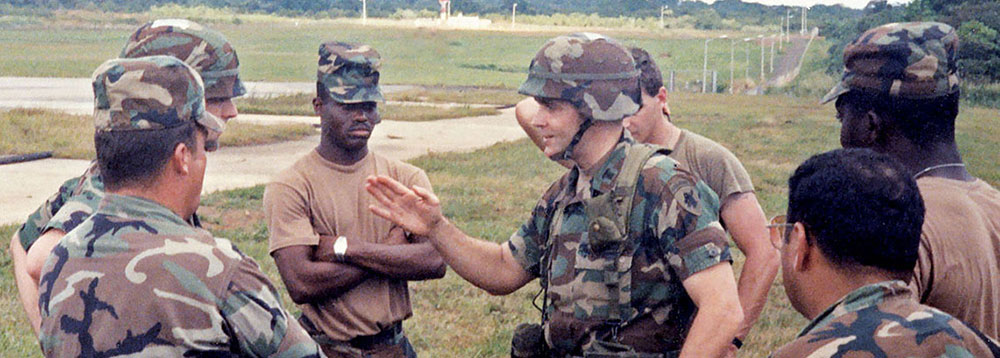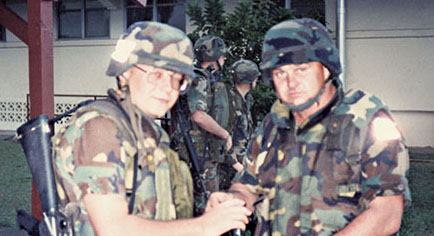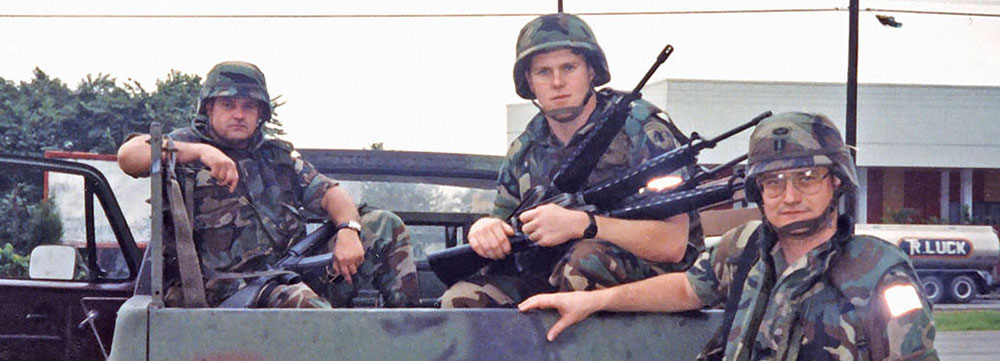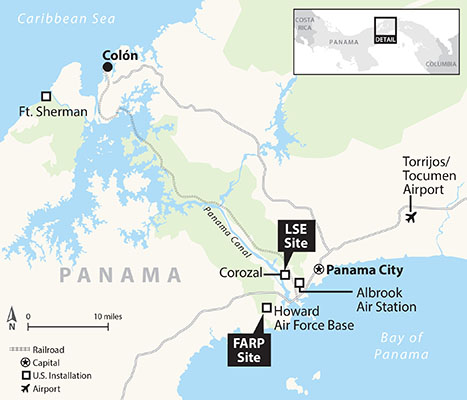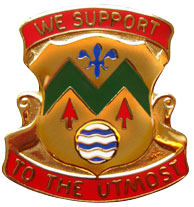ABSTRACT
The 528th Support Battalion, a relatively new and untested unit, was facing inactivation on 20 December 1989. But, the 528th deployed two task-organized support elements to Panama during Operations JUST CAUSE and PROMOTE LIBERTY that caused the Army to reconsider its decision. Their performance demonstrated the need for a dedicated ARSOF combat service support battalion.
TAKEAWAYS
- Operations JUST CAUSE and PROMOTE LIBERTY validated the need for a dedicated ARSOF CSS capability
- The 528th Support Battalion’s contribution to JUST CAUSE/PROMOTE LIBERTY was both carefully planned and rehearsed (the FARP), and completely improvised (the LSE); but both elements accomplished their mission
- Despite being undermanned and relatively inexperienced, the 528th’s outstanding performance in Panama convinced the Army to reconsider inactivating the unit
NOTE
This article is part of our series on Operation JUST CAUSE. For a background on Special Operations’s involvement in JUST CAUSE, read The Path to War in Panama.
DOWNLOAD
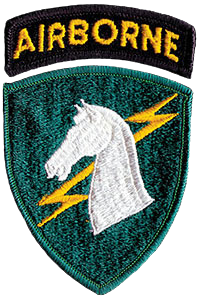
Activated at Fort Bragg, North Carolina, on 3 June 1986, the 13th Support Battalion was ‘reflagged’ by the U.S. Army Institute of Heraldry as the 528th Special Operations Support Battalion (SOSB) on 16 7May 1987.1 Authorized 12 officers, 5 warrant officers, and 146 enlisted soldiers, the 528th SOSB was to provide dedicated administrative, logistical, and maintenance support to the Headquarters, [U.S.] Army Special Operations Command, and, when directed, to other Army Special Operations Forces.2 Its immediate headquarters was the 1st Special Operations Command (1st SOCOM), the forerunner of the 1st Special Forces Command (Airborne). Before Operation JUST CAUSE, the 528th SOSB participated in readiness exercises and provided limited support to operational missions, but had not been tested in combat.3
528th SUPPORT BATTALION ORGANIZATION
(Circa 1989)
From inception as an ‘out of hide’ unit, the 528th SOSB had to compete for personnel and resources in 1st SOCOM.4 Lieutenant Colonel (LTC) Louis G. Mason, the 528th’s first commander, and the driving force behind its creation, had to prove its necessity.5 Major (MAJ) Joseph R. Lalla, Chief, G-4 Plans, 1st SOCOM, also wanted to “prove the concept” of a dedicated ARSOF support battalion, by incorporating the 528th SOSB into contingency plans. The crisis in Panama presented an opportunity.
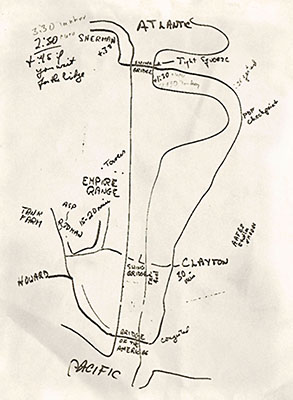
In March 1988, MAJ Lalla was part of a nine-man 1st SOCOM planning team, led by the Deputy Commander, Colonel Joseph S. Stringham. They were to write a Joint Special Operations Task Force (JSOTF) support plan for Contingency Plan (CONPLAN) ELABORATE MAZE, the U.S. Southern Command (USSOUTHCOM) contingency plan for Panama.6 Lalla inserted two 528th SOSB Forward Arming and Refueling Points (FARP) into the logistical annex of the BLUE SPOON operations order (OPORD).7 Positioned at Fort Sherman and Empire Range, the FARPs would support the 160th Special Operations Aviation Group (SOAG) and 617th Special Operations Aviation Detachment (SOAD) during combat operations.8
In preparation for its BLUE SPOON mission, the 528th SOSB trained and rehearsed with the 160th SOAG, to become compatible with that unit’s refueling teams.9 In May 1989, MAJ Lalla, as the 528th’s Executive Officer (XO), led a small contingent to Panama, as part of the “security enhancement” mission.10 His party included a refueling team, led by First Lieutenant Robert T. ‘Tim’ Davis. They set up and operated a FARP at Fort Sherman for thirty days, to support ARSOF aviation elements in Panama.11

When BLUE SPOON was revised, the 528th role was reduced to one FARP at Howard Air Force Base (AFB), across the isthmus.12 In October 1989, the 528th’s refueling team rehearsed its BLUE SPOON part at Hunter Army Airfield, by supporting all ARSOF units involved.13 The team was combat ready; all that remained was to monitor the situation in Panama.14
On 17 December 1989 (D-3), the 528th was directed to deploy a twelve-man Special Operations Support Element (SOSE) to Panama on 18 December to operate a FARP for Special Operations Aviation, and provide ammunition support to the 75th Rangers of Task Force RED. Led by Captain (CPT) John M. Gargaro, the SOSE included several soldiers who ran the FARP on Fort Sherman earlier that year, to include its non-commissioned officer-in-charge (NCOIC), Master Sergeant Michael A. Bienkowski. The SOSE deployed with one M1008 Commercial Utility Cargo Vehicle (CUCV), two M3422 2½ ton ‘deuce and a half’ trucks, four 10,000-gallon fuel bags, two 350-gallon-per-minute pumps, and five four-inch refueling point hoses.15

